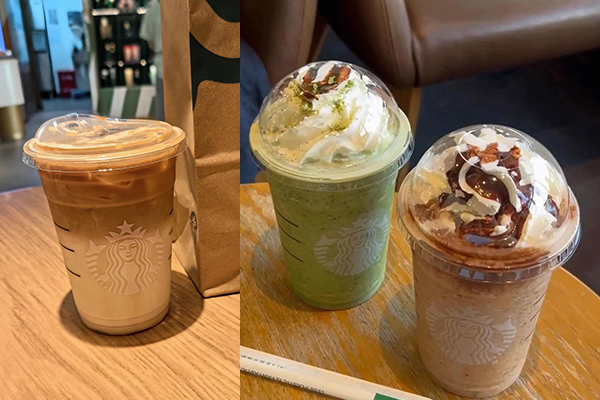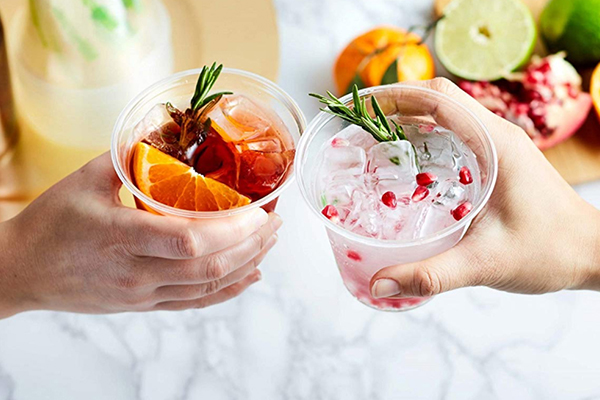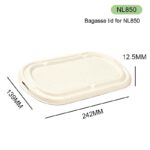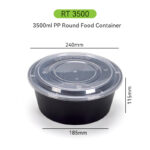This article explores why Japan prefers RPET materials for single-use fruit drink cups, focusing on the country’s growing commitment to sustainability and eco-friendly packaging solutions. It examines the advantages of RPET as a recycled material in food packaging, its environmental benefits, and the role of sustainable packaging in Japan’s efforts to reduce plastic waste. Learn how RPET is revolutionizing the packaging industry and why it’s becoming the preferred choice for fruit drink cups in Japan.
Introduction
Japan is renowned for its commitment to sustainability and environmental consciousness, and one of the most significant trends in recent years has been the growing preference for RPET (recycled polyethylene terephthalate) in food and beverage packaging. In particular, RPET has gained traction as the material of choice for single-use fruit drink cups, driven by its eco-friendly properties and alignment with Japan’s sustainability goals.
In a country where packaging is not only functional but also plays a significant role in aesthetics and environmental responsibility, RPET has emerged as a superior choice for beverage companies looking to reduce their carbon footprint without compromising on quality. This article explores why RPET is the preferred material for Japan’s fruit drink cups, focusing on its sustainability, consumer demand, and the overall environmental benefits it offers.

Why RPET for Single-Use Fruit Drink Cups in Japan?
Japan’s love for RPET in beverage packaging can be attributed to several key factors. The material is not only strong, transparent, and cost-effective but also aligns with Japan’s stringent recycling and sustainability standards.
1. Sustainability and Environmental Concerns
Japan has long been a pioneer in waste management and recycling. The country is known for its aggressive recycling programs and its emphasis on reducing plastic waste. RPET, made from recycled plastic, helps reduce the demand for virgin plastic materials, which is a crucial component of Japan’s goal to reduce environmental impact.
RPET and Circular Economy
The growing focus on the circular economy means that products made from recycled materials like RPET can be reprocessed and reused repeatedly, which supports Japan’s commitment to sustainability. RPET beverage cups are a perfect example of how recycled materials can be used effectively in single-use packaging, minimizing waste and reducing the reliance on raw materials.
2. Consumer Preferences for Eco-Friendly Products
Japanese consumers are increasingly concerned about the environmental impact of the products they purchase. This has led to a preference for sustainable food and beverage packaging. With increasing awareness of the negative effects of plastic pollution, Japanese consumers are actively seeking eco-friendly alternatives, such as RPET, for their beverages and snacks.
This shift in consumer behavior has forced many beverage companies to pivot towards packaging solutions that prioritize sustainability. The transparent, high-quality appearance of RPET ensures that the end product not only meets environmental standards but also appeals to consumers seeking aesthetically pleasing packaging for their fruit drinks.

3. Government Regulations and Policies Supporting RPET
Japan’s government has implemented several policies aimed at reducing plastic waste and promoting the use of recycled materials. In 2020, Japan introduced the Plastics Resource Circulation Strategy, which encourages the use of recycled plastics like RPET in food packaging.
With the goal of increasing the recycling rate of plastics, Japan is working to create a closed-loop system where materials like RPET are reused multiple times. These regulations have created an environment in which RPET packaging is not just an option but a necessity for many companies looking to comply with government guidelines.
4. RPET and Quality Assurance
One of the reasons RPET is so widely adopted for single-use fruit drink cups in Japan is its superior quality. RPET offers the same level of strength and clarity as virgin plastic, making it ideal for beverages that require transparency and the ability to hold liquids without leakage. The material is durable, lightweight, and retains its high-quality appearance throughout the product’s lifecycle.
5. Cost-Effectiveness of RPET
In addition to the environmental benefits, RPET is often more cost-effective than using virgin plastic. For businesses in Japan, RPET provides a way to cut down on packaging costs while still maintaining high standards of quality. The increased availability of recycled plastic material has also driven the cost of RPET down, making it an attractive option for companies in the competitive beverage market.
RPET vs. Other Materials for Single-Use Fruit Drink Cups
While RPET is becoming the preferred material for single-use fruit drink cups in Japan, it’s essential to compare it to other packaging materials, such as PLA, PET, and PP.
RPET vs. PET
While both RPET and PET are derived from the same material (polyethylene terephthalate), the key difference is that RPET is made from recycled PET bottles, whereas PET is made from virgin plastic. RPET has the same strength, clarity, and appearance as PET, but it offers significant environmental benefits by using recycled materials, which reduces the carbon footprint.
RPET vs. PLA (Polylactic Acid)
PLA, a biodegradable material made from renewable resources like corn or sugarcane, is an eco-friendly option but has limitations in terms of durability and performance under heat. PLA is not suitable for hot beverages, unlike RPET, which is durable and heat-resistant. Additionally, PLA requires industrial composting to break down, while RPET can be recycled infinitely without losing its properties.
RPET vs. PP (Polypropylene)
PP is another commonly used material for food packaging. While PP is highly durable and heat-resistant, it is not as transparent as RPET, which makes RPET a more visually appealing option for packaging beverages like fruit drinks. Additionally, RPET offers the advantage of being recyclable, while PP is more challenging to recycle in some regions.
Benefits of Using RPET in Fruit Drink Cups in Japan
1. Environmental Impact Reduction
By using RPET for single-use fruit drink cups, Japan helps to significantly reduce the environmental impact associated with plastic waste. The use of recycled material reduces the need for virgin plastic, decreases carbon emissions during production, and lessens the burden on landfills.
2. Promotion of Recycling and Reuse
As part of Japan’s commitment to a circular economy, RPET plays a crucial role in ensuring that plastics are continuously reused, creating a system where waste materials are turned into valuable resources.
3. Consumer Satisfaction and Brand Loyalty
As consumers become more eco-conscious, brands that prioritize sustainable packaging can build stronger relationships with their customer base. Offering beverages in RPET cups demonstrates a commitment to environmental stewardship, which enhances brand loyalty.
FAQ
1. What is RPET?
RPET stands for recycled polyethylene terephthalate, a plastic made from recycled PET bottles. It offers the same strength, clarity, and durability as virgin plastic but with a smaller environmental footprint.
2. Is RPET safe for food packaging?
Yes, RPET is food-safe and meets all regulatory standards for food contact materials. It is commonly used in packaging for beverages, snacks, and ready-to-eat meals.
3. Can RPET cups be recycled?
Yes, RPET is 100% recyclable. Once used, RPET cups can be collected, cleaned, and reused to produce new packaging materials.
4. Why is Japan choosing RPET for single-use cups?
Japan favors RPET because of its environmental benefits, strong consumer demand for eco-friendly packaging, and government policies that encourage the use of recycled materials.
5. Can RPET cups be used for hot beverages?
RPET is generally used for cold beverages. For hot drinks, companies may opt for other materials like CPLA (heat-resistant PLA) or PP.
Conclusion
Japan’s preference for RPET in single-use fruit drink cups represents a significant shift towards sustainable packaging solutions. By prioritizing RPET, Japan is not only meeting consumer demand for eco-friendly products but also contributing to global efforts to reduce plastic waste and improve recycling practices. As the circular economy continues to evolve, RPET will undoubtedly play a key role in creating a more sustainable future for food packaging.
References
-
European Bioplastics – RPET Recycling
https://www.european-bioplastics.org/rpet-recycling/ -
Japan External Trade Organization – Plastic Recycling in Japan
https://www.jetro.go.jp/en/invest/sector/plastics_recycling.html -
Environmental Protection Agency (EPA) – Benefits of RPET Packaging
https://www.epa.gov/recycling/benefits-recycled-content-products -
The Japan Times – Japan’s Push for Sustainability and Eco-Friendly Materials
https://www.japantimes.co.jp/news/2022/06/29/environment/sustainability-japan-plastics/ -
Xiamen Dashan – RPET Packaging Solutions
https://www.dashanpacking.com
Disclaimer & Copyright Notice
This article is created by the Dashan Packing editorial and research team.All information presented here is for educational and industry reference purposes only.Some data and standards cited in this article are sourced from publicly available materials,official regulatory documents, or third-party publications, which are properly credited where applicable.
All rights to third-party trademarks, images, and content belong to their respective owners.If any copyrighted material has been used inadvertently, please contact us at angel@chndashan.com.We respect intellectual property rights and will promptly remove or revise any material upon verification.





